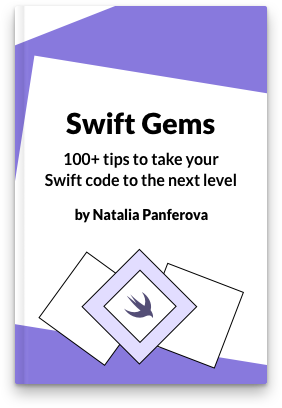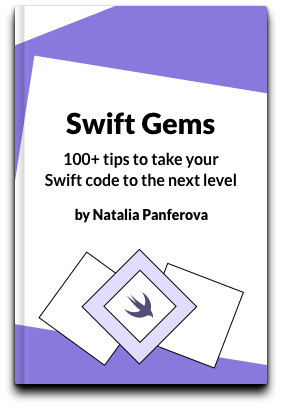Pattern matching for custom types in Swift
Pattern matching in Swift is a technique that allows us to check and de-structure data in a concise way. It's most often seen in switch statements, where it can match against a variety of patterns.
An expression pattern is used in a switch case to represent the value of an expression. The magic behind matching these patterns lies in the ~= operator, which Swift uses under the hood to determine if the pattern matches the value. By default, ~= compares two values of the same type using the == operator, but we can overload it to provide custom behavior.
Let's consider a custom type Circle and demonstrate how to implement custom pattern matching for it.
First, we define a simple Circle struct with a radius.
struct Circle {
var radius: Double
}
let myCircle = Circle(radius: 5)
Now, let's overload the ~= operator to match a Circle with a specific radius.
func ~= (pattern: Double, value: Circle) -> Bool {
return value.radius == pattern
}
This overload allows us to use a Double in a switch statement case to match against a Circle's radius.
switch myCircle {
case 5:
print("Circle with a radius of 5")
case 10:
print("Circle with a radius of 10")
default:
print("Circle with a different radius")
}
We can add as many overloads as we need. For example, we can define custom logic to check whether the Circle's radius falls within a specified range.
func ~= (pattern: ClosedRange<Double>, value: Circle) -> Bool {
return pattern.contains(value.radius)
}
The switch statement can now match myCircle against Double values and ranges, thanks to our custom implementations of the ~= operator.
switch myCircle {
case 0:
print("Radius is 0, it's a point!")
case 1...10:
print("Small circle with a radius between 1 and 10")
default:
print("Circle with a different radius")
}
Custom pattern matching in Swift opens up a lot of possibilities for handling complex types more elegantly. By overloading the ~= operator, we can tailor the pattern matching process to suit our custom types. As with any powerful tool, we should use it wisely to enhance our code without compromising on readability.
As someone who has worked extensively with Swift, I've gathered many insights over the years and compiled them in my book, Swift Gems. The book focuses exclusively on the Swift language and Swift Standard Library, offering over 100 advanced tips and techniques on topics such as optimizing collections, leveraging generics, asynchronous programming, and debugging. Each tip is designed to help intermediate and advanced Swift developers write clearer, faster, and more maintainable code by fully utilizing Swift's built-in capabilities.



